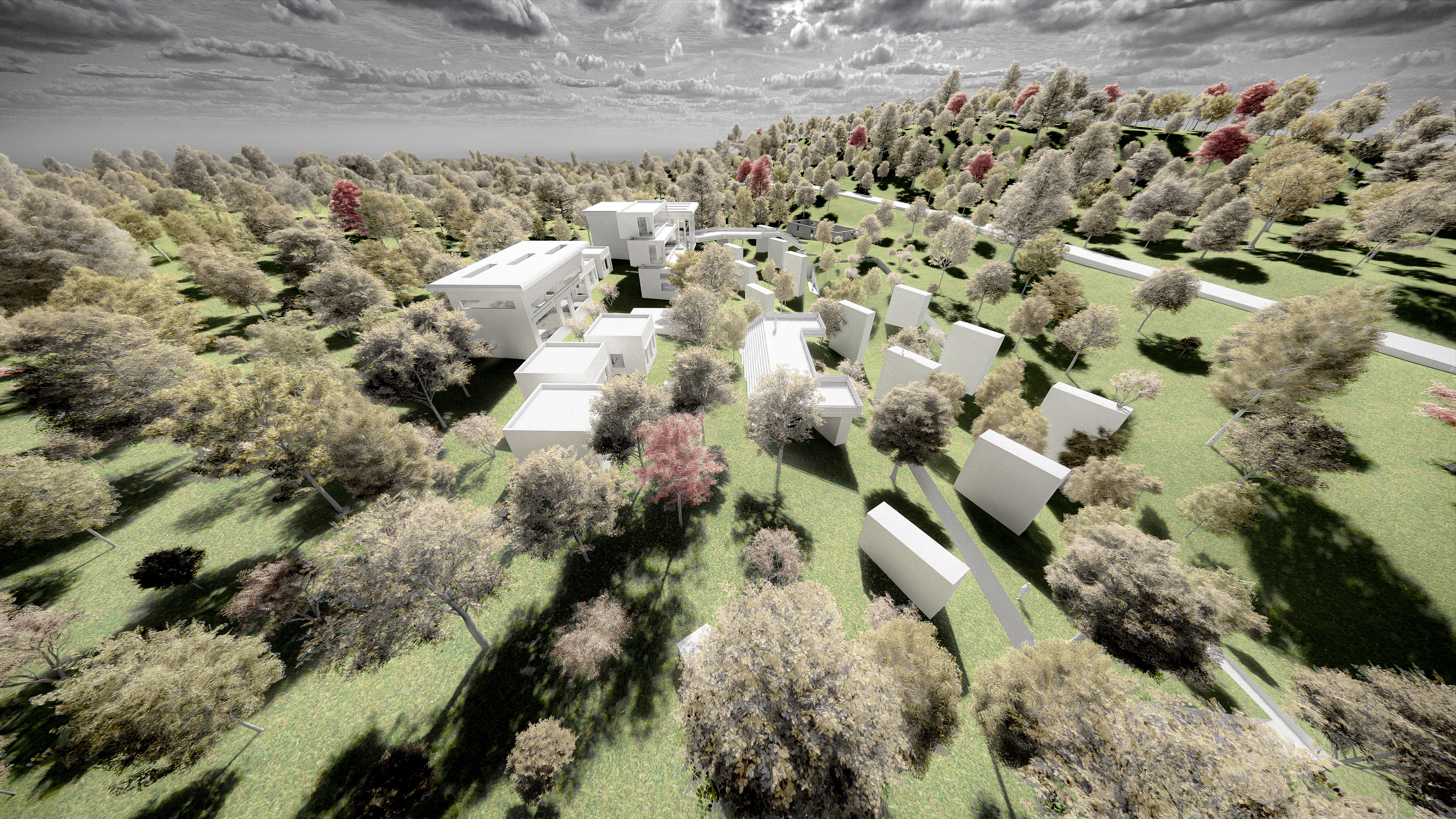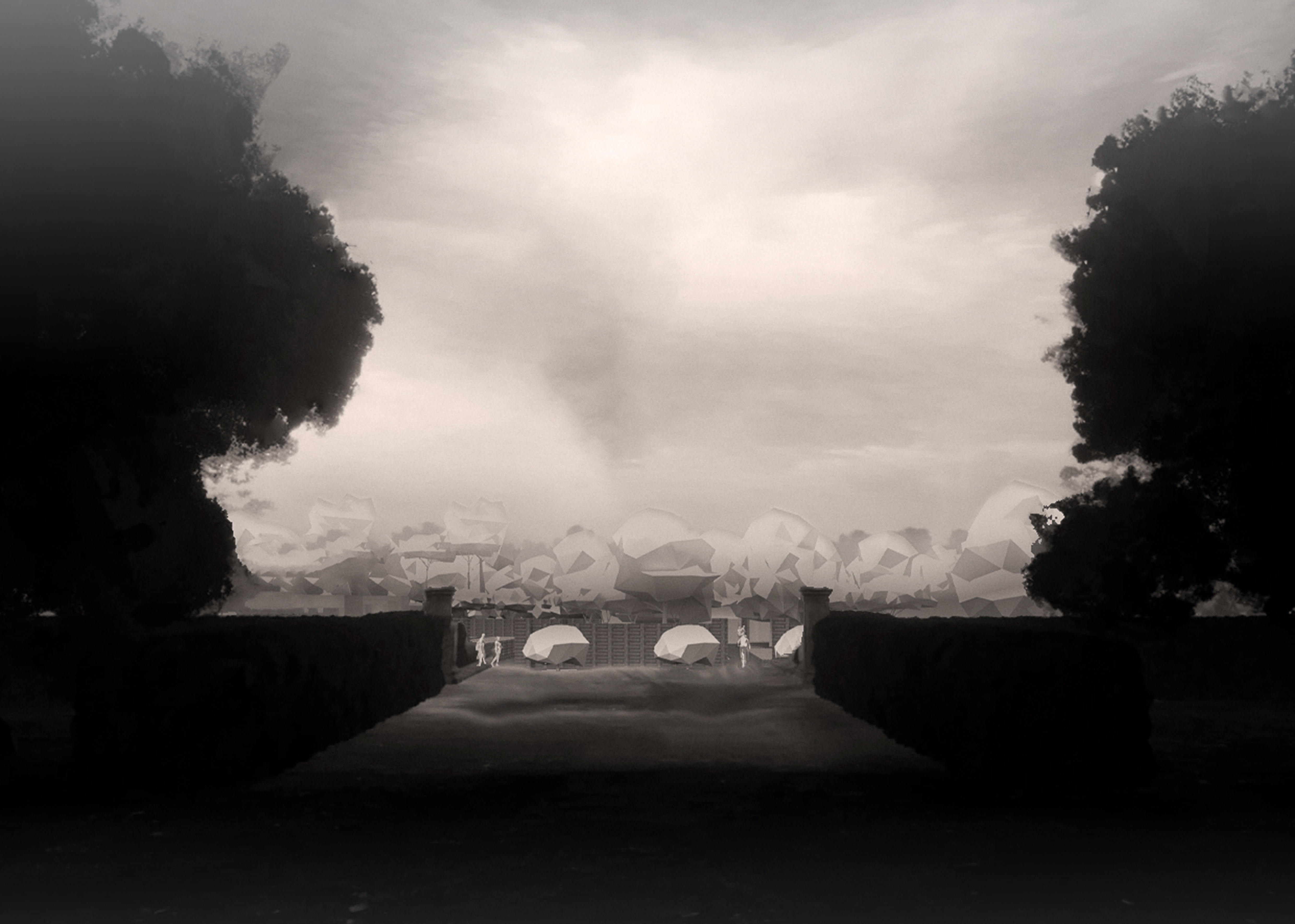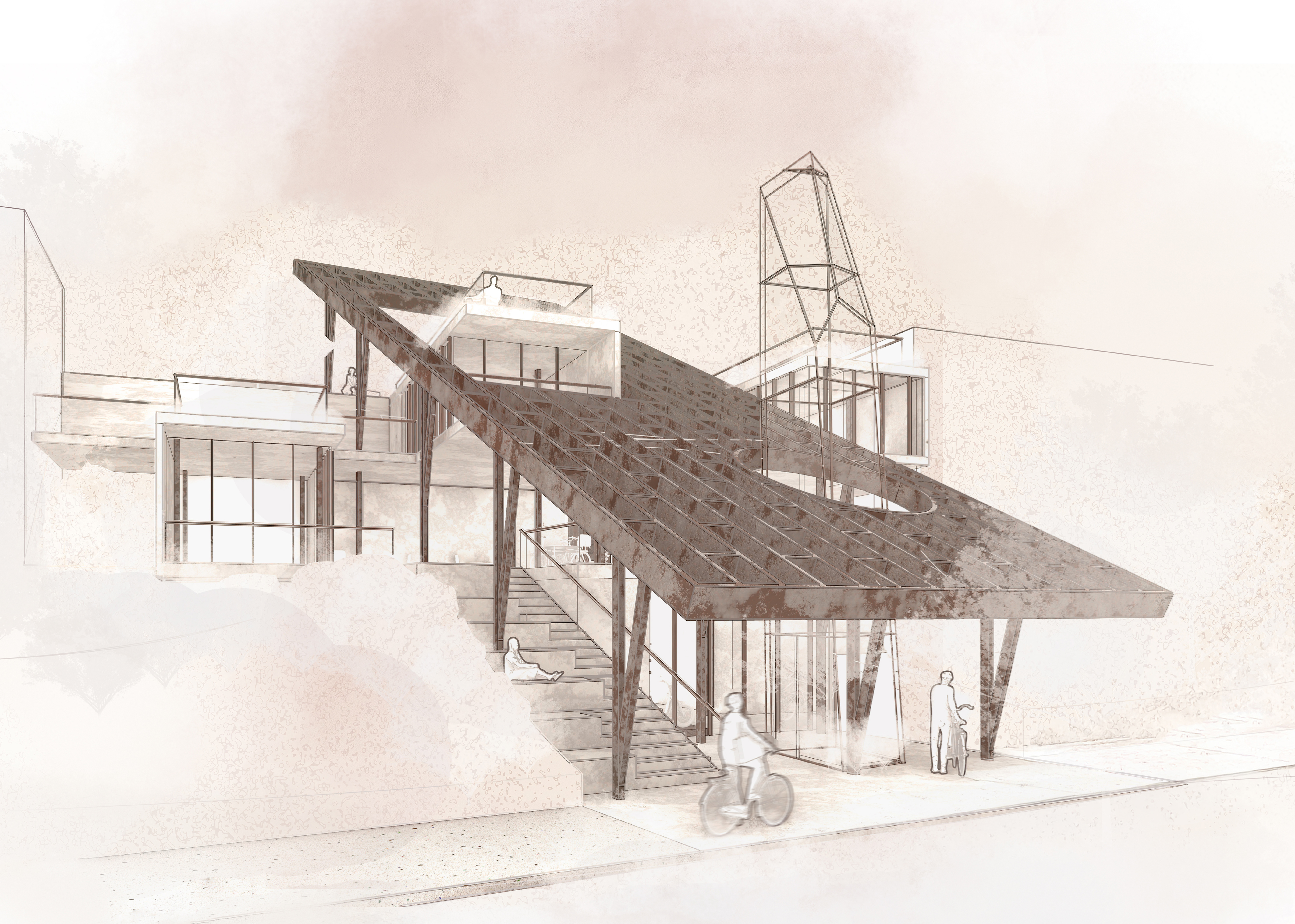encraft studio
Cane Hill, AR | 2020
Cane Hill is a unique record of the multi-layered, complex history of Northwest Arkansas. Cane Hill owes its existence to a conflicted narrative of Native American possession, dispossession, conquest, colonization, education, prosperity, and transient tragedy—and the ground has born witness to that uplifting and tortured saga through the centuries.
The project begins working with the existing context you have designed: the topography, the ruins, the cut and the datum. At the heart of the Community Craft Center is the Great Hall. The Great Hall is the primary interior space of the center where lectures, dinners, craft technique demonstrations, and reunions are held. This space is reminiscent of a one-room schoolhouse in its volume and use, but it is flexible enough to accommodate groups of 75 and intimate enough to display baskets, pottery and ceramics, and woven tapestries. One of the most compelling features is its proximity to the cutting garden, which features cosmos, marigolds, indigo, and other plants used for natural dying of wool and a vegetable garden specializing in heirloom vegetables and herbs. The Great Hall is accessible directly from the main entrance and establishes a clear hierarchy by size, form and placement from the other built elements.

Graphite

Charcoal
A public entrance is an important moment and a profound threshold between the exterior designed landscape and the interior program of the building. It accommodates the day-to-day arrivals to the craft center. As the primary public entrance, it celebrates the relationship between the ground and the enclosure, the exterior and interior, and the transformative power of a threshold to create a powerful architectural moment.
While the Great Hall is the spatial hallmark of the center, the studios and classrooms are essential spaces for the mission of the center. The studios are where the artisans work while in residence, teach classes to people from the surrounding region, and offer tours to visiting school groups. The three studios are dedicated to the following: basket making, pottery and ceramics, and weaving. Two classrooms located conveniently to the studio spaces provide opportunities for more traditional lectures on the history of the craft, techniques, and the history of Cane Hill. These classrooms accommodate up to 15 people and will have occasional use with intense use during festivals, summer classes, and community-wide workshops.
EXPERIENCING A WORKSHOP


Artisan quarters provide private sleeping and bathing spaces for the visiting craftspeople who will be in residence at the craft center. These small, efficient spaces are intended to provide respite in a quiet location with a small, exterior space and view to the natural landscape. The center has a small library for visitors to research regional crafts through publications and archives. Additionally, Cane Hill plans to curate a collection of historical and contemporary crafts from the surrounding region to serve as a hands-on educational resource. Like a traditional library, this will have shelves for books, and racks for magazines but it also needs space for storing the library of regional craft examples so they can all be seen and catalogued.
The garden is located near the Great Hall and includes the cutting garden and vegetable garden. The gathering spaces are exterior spaces intended to engage the natural landscape. These exterior spaces provide opportunities for open air display of crafts, outdoor lectures, films and other community sponsored events.

Section A

Section B

Section C













